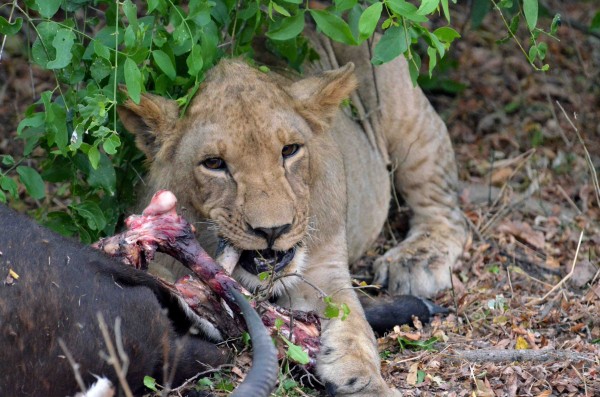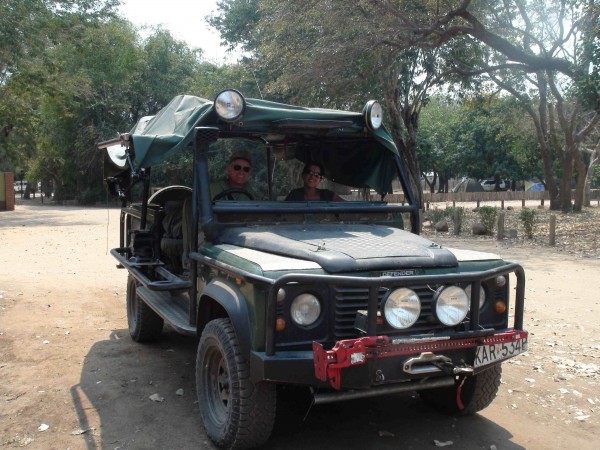Posted by Paola Bouley of Projecto Leões da Gorongosa – Gorongosa Lion Project in Cat Watch

It was one of those eerily beautiful winter mornings in Central Mozambique. Smoke hung thick in the air from the seasonal fires that had begun raging across the land, and Bob Poole and I hopped into his land rover and headed in to Gorongosa National Park towards a signal that had just come in. Helena (a mother lioness) was on a kill—the satellite data-pattern was pretty clear on that—and we wanted to document exactly what was going on.
Our route intersected with meandering elephant tracks as we drove out over the charred grasslands, edging closer to the signal’s origin on the high point of the Muzicadzi River.

There we stopped to watch and listen, and a herd of wildebeest did the same, peering out at us a few 100 meters away, but their attention shifted to some activity under the scrub close-by, until some limit of comfort was suddenly breached and they bolted off.
We moved forward slowly, scrutinizing every inch of land and anxiously realizing that Helena was already gone (no signal). Then we lay our eyes on the five Sungue cubs, hunkered down and feasting on a young bull sable. Helena had made her kill for sure, leaving a small feast for her cubs. (Later we learned that while leaving her cubs to eat she had headed North to meet up with her beau on another drainage.)

Now Gorongosa is an ecosystem under recovery and recent years have seen remarkable increases of a wide range of species. So how the big cats of this land make their living in this rapidly changing system is a question we are scrutinizing. The common belief was that Warthogs were their mainstay, but otherwise very little was known. And for sure, Warthogs in their high abundances are definitely an important part of their diets. But what about the Sable, Buffalo, and Wildebeest, and all the Waterbuck, Reedbuck and Oribi? How do lions relish (or not) this more diverse spectrum of prey? To understand this more deeply, we have to investigate more of these grisly scenes.
A few days later the team encountered a second Sable kill-site, but this time three taken down at once! A mother (with only a few bites removed), young bull (slightly eaten), and calf (fully eaten). There is a certain uneasiness with which we assimilate such grim scenes: These lionesses were on a killing spree.

A week or so before, it was a young male Waterbuck too; killed, guarded for a few hours, but then finally just left whole for the vultures. Just a few weeks later, it was a young Eland (Africa’s largest antelope), but this one was consumed. And in between the spates of Warthog-for-dinner, a few more of the rarer Wildebeest were taken, this to the horror of the park’s herbivore experts. I’ve been told more than a few times (jokingly, of course) to discipline our lions.
Through continued investigation we will be able to really understand how the diet of Gorongosa’s largest carnivore reflects the shifting ecology in a spectacularly recovering ecosystem. But right now, one thing’s for sure—Gorongosa’s lions are not going hungry.
More info: Bob Poole is on assignment (living and working in Gorongosa for 16 months) to document the recovery of the Park, its communities and wildlife (and especially its lions.) The PBS/National Geographic Int. series will air in 2015 – stay tuned!

Credits: Cat Watch

